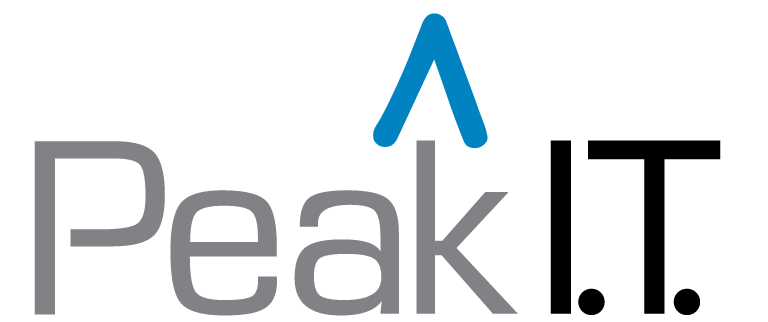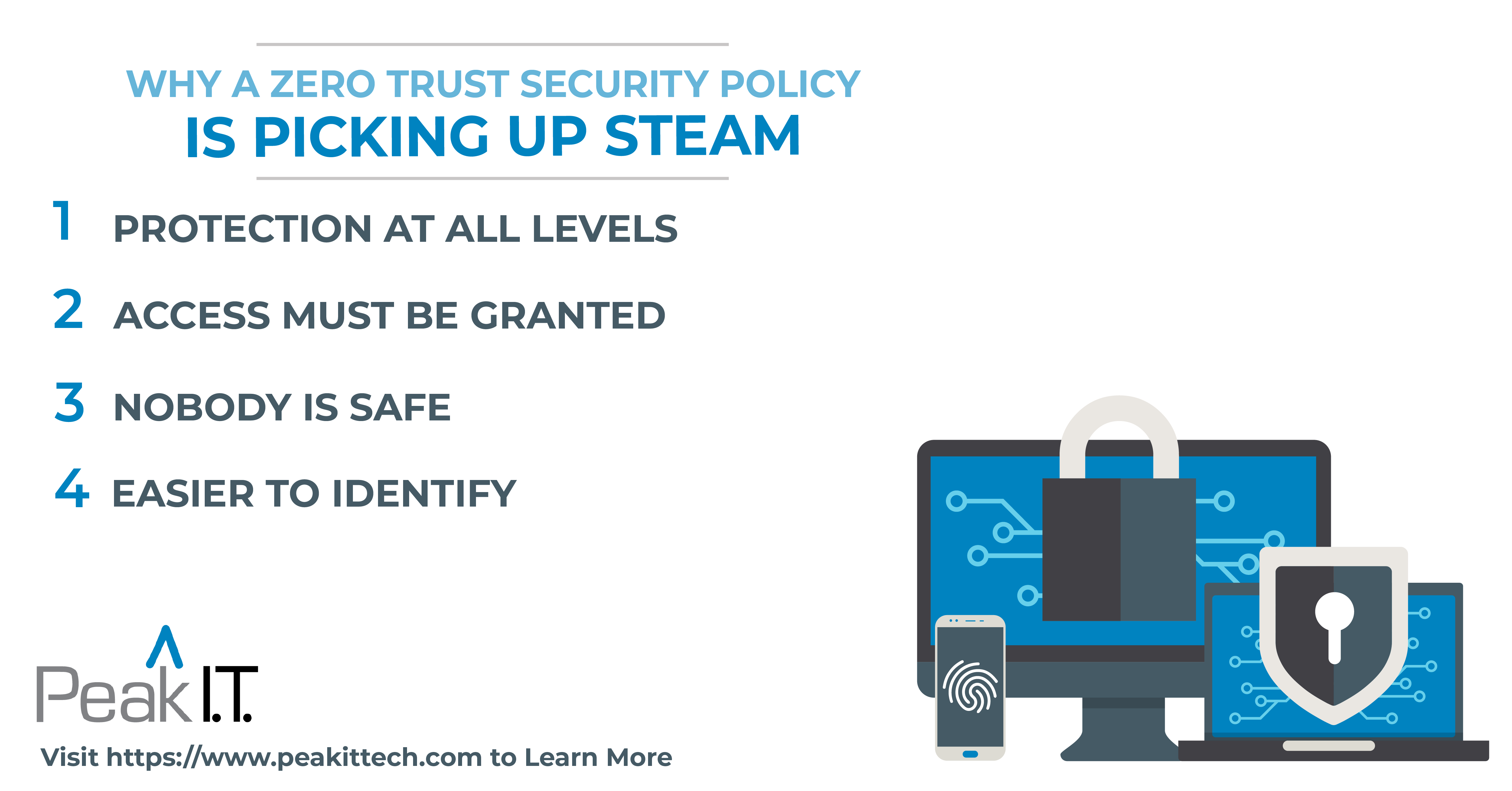Every time we turn on the news there seems to be another horror story about how a big organization. All have to do with a flaw in their security system and now they’re paying for it. Just this year, Colonial Pipeline and Peloton, assumed well-protected companies, experienced an information breach. If firms this large are vulnerable to security breaches, then there’s a target on your back as well. In fact, of all cyberattack attempts, 43% of small businesses are the target.
Of those 43%, 60% go out of business within 6 months of the attack. Protecting your most valuable asset, your information, is extremely important in today’s world.
There is a clear question to be posed after reading the alarming statistics: How does your company stay safe? There is one trend in the world of cybersecurity that is picking up major steam, a zero-trust policy. In short, a zero-trust security policy gives limited access at every level of your company. Access needs to be granted for information to be viewed, edited, or accessed in any way. This is in hopes that if a breach does occur, limited amounts of information are available to the hacker. Today, we’re discussing why this has become so popular.
Protection at all Levels
This has to do with the limited access. You’re not handcuffing your team, you’re protecting them and the rest of the company. If a mid-level sales associate doesn’t need access to accounts that they don’t work on or deal with, they don’t need access like a C suite executive might need access to different sets of data. This isn’t just a “the top of the company has all of the power” play either. C suite employees, Presidents, and owners might not have access to certain things that might not concern them on a day-to-day basis.
Access Must be Granted
In a zero-trust policy, everyone is considered to have malicious intent, even if they’re in the house. How do you determine who grants access? This is typically determined by your IT team, but the owner of the file/document wouldn’t be a bad start. It can also depend on what type of information you’re dealing with, so the head of your finance department may have to give access to everyone to view certain information. If you’re a marketing agency, a direct point of contact with a client may hold the power to grant access to that specific client’s information and files.
This one is up to you, but be careful about who you give access to and who you give permission to grant access to.
Nobody is Safe
This can mean two different things, and we’re getting into both of them. First, we established that no company is safe from being targeted for an attack, so that’s why zero-trust is becoming more and more popular. Second, nobody within your company is safe. Cybercriminals do not discriminate. If you’re an executive, you will be targeted. If you’re an intern to a new higher, you will be targeted. Being aware of this fact can open your eyes to why this new policy may be needed to keep valuable information safe.
Easier to Identify
As soon as a breach is recognized, the first questions asked are: “What do they have access to?”, “How did they get in?”, and “How do we put a stop to it?”. If your company has a zero-trust policy implemented, all of this can be answered a lot easier. If you see what information is being taken, you can see who had access, whether it was granted or it was the person who granted the access. This will then answer what they have access to.
Is it a person with limited access to the information that they seem to be after, or is it the owner of all of the information with all of the access? Where to block them off can be a case-by-case thing, but at the very least, the person who they may be pretending to be can be cut off from getting access to anything else until after the breach is solved.
Information is your most valuable asset and cybercriminals are after it every day. Don’t let your company be the next target, click here to contact us to find out how we may be able to help.

